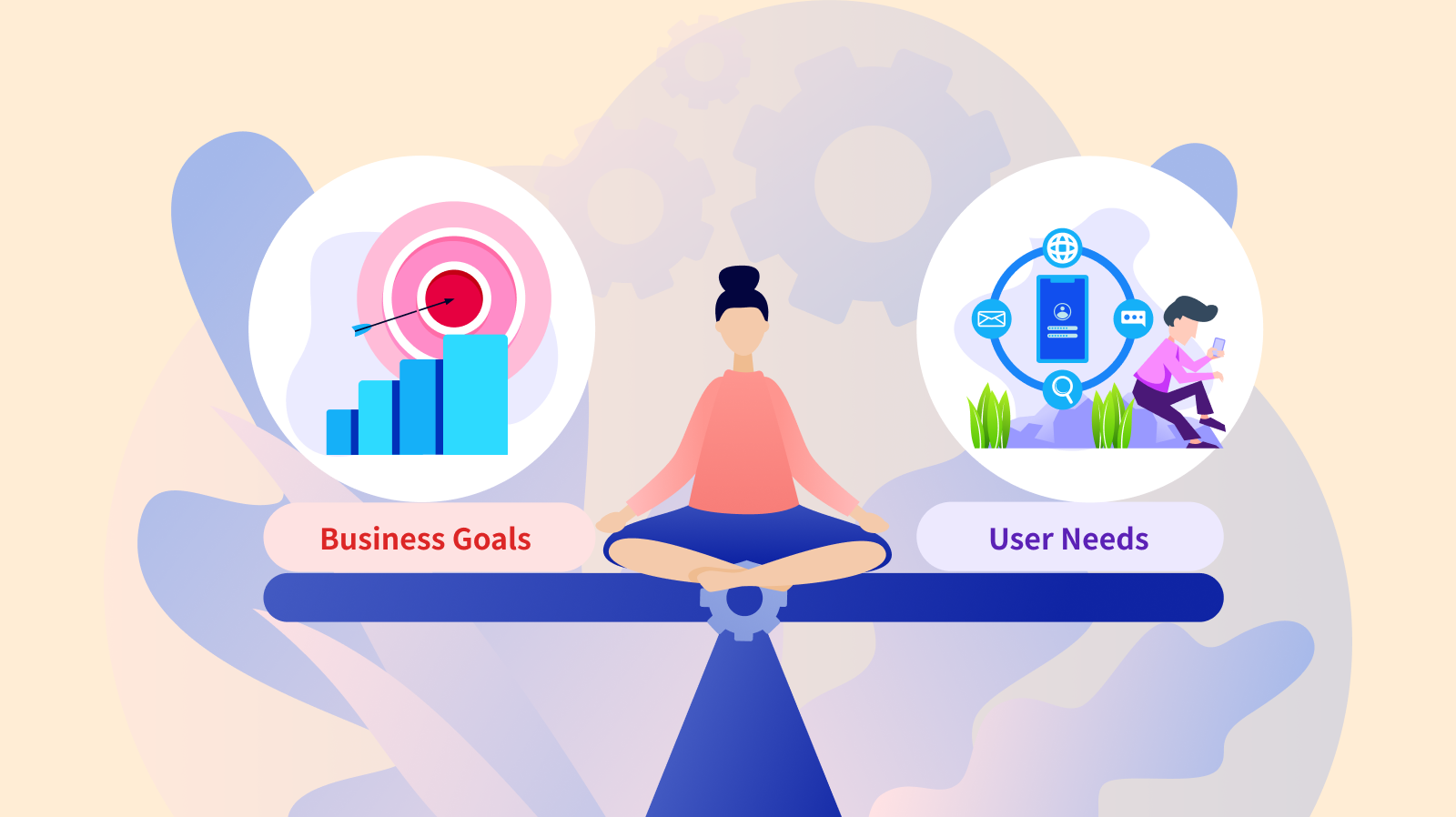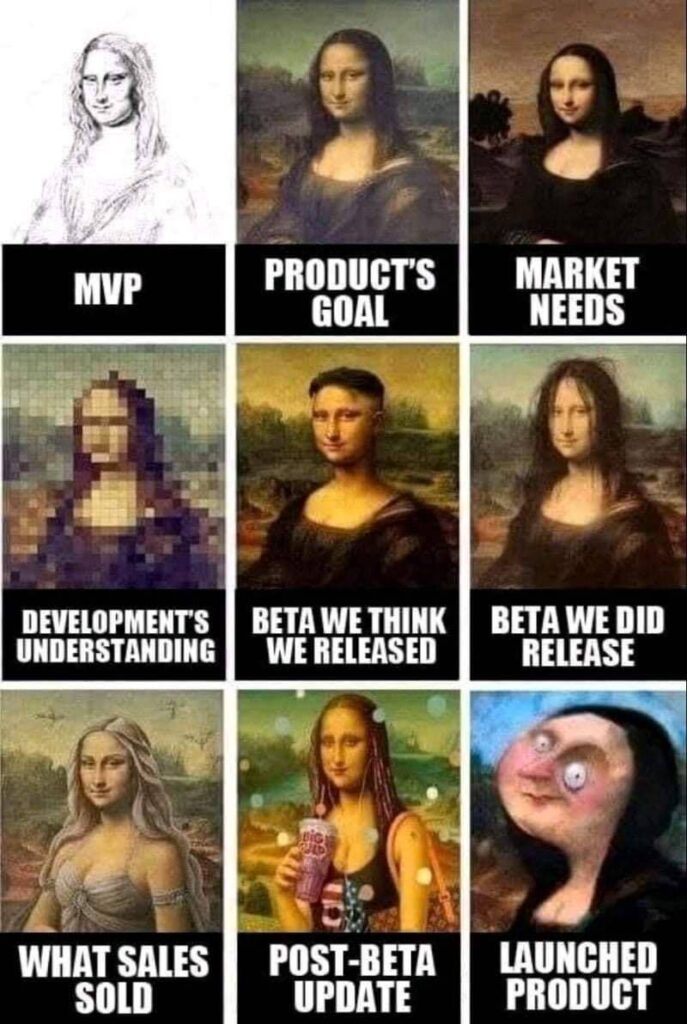Product Designers: How to Meet Business Goals and User Needs
 Suresh Sapkota
Suresh Sapkota
A product designer can be defined as a professional who provides a middle ground between user needs and business goals when it comes to the use of research, design, and partnership.
Product designer is a person who thinks and makes innovative and easily navigable products keeping the technical and artistic skills at par. They are oriented to the aspects of the interaction with the product, both utilitarian and esthetic, and work together with the other specialists to implement an idea. Product designers aim at providing satisfactory profits, on the part of the company, and use satisfaction on part of the customers and vice versa.
😞 #Problems
To be specific, let’s be clear on problems: when product designers do not succeed in aligning what they do with the company’s objectives and customers wants.
Misallocation of Resources
Items or services not aligned to a company’s objectives or consumers’ preferences constitute a populist option since they just occupy time, resources, and energy.
Poor User Experience
Stated in other words: If the product cannot solve users’ real problems, they will be frustrated and dissatisfied.
Inefficient Processes
Redesigns and changes caused by the lack of alignment can ultimately hinder development and increase expenses.
Brand Damage
Harm to the company’s reputation and brand value may happen if consumers and business stakeholders encounter the product, which fails to deliver business or user goals.
Missed Market Opportunities
When such alignment is not made, designers stand to be in a position of overlooking other user needs or other opportunities in the market that could be of benefit to the designers.
Financial Losses
Finally, solutions that have no alignment with business and or users’ needs might not sell and could even become loss-making ventures.
💡 #Solutions
In being a product designer, you are constantly caught in between the business that has the product designed and the actual user of the product. This overview of the state of the art for product designers presents many beneficial practical approaches for harmonizing design decisions with business goals and users’ requirements.
Here are few key points on how a product designer should actively collaborate with stakeholders to align with business goals & market need with balancing user needs.
1. Understanding the Business
The specific goals of the design process therefore have to be aligned to the overall business goals of implementing and using the design in the business before designing is initiated. It has been established that this company has a profit maximization objective as well as business growth.
You can tentatively transform these goals into kind of a ‘moral’ guiding your following decisions in a direction of solution which will be satisfying both the client and the company.
Identify Key Objectives
Stakeholder Engagement
Business Metrics
2. Know Your User Needs
The first principle of user-centered design is intent on knowing exactly who your target clients are. Engage in a comprehensive user study in order to determine what pains the user feels, what the speak of and how they use it.
What are their objectives in consuming your product? By empathizing with your users, you'll discover opportunities to align their needs with the business goals by:By empathizing with your users, you'll discover opportunities to align their needs with the business goals by:
Conduct User Research
Develop User Personas
User Journey Mapping
Finding & analyzing data
Communicate Insights
3. Aligning User Requirements with Business Goals
Main is to understand how the goals set within the context of a business environment can be aligned in such a way that a productive relation between the offering product functions and the end-users’ requirements are achieved. It helps to guarantee that the product is relevant to the consumer needs while also contributing to the businessman’s profit and the user’s satisfaction.
Here’s how to effectively align business goals with user needs:
Define Common Objectives
Prioritize Features
Create a Unified, Shared Vision
4. Design Process
Design thinking is a systematic way of developing products that solve the intended users’ problems and meet organizational objectives. There is discovery and sourcing of information about the users, their needs and challenges they present to designers. The next is concept and creativity development, which involves the coming up with creative solutions to the problem to be solved.
Developing a prototype and a test is critical as the developers work on making physical models and get to know users’ opinions to enhance the design. Last of all, the implementation phase provides realistic execution of the design, which is often radically altered from the starting vision and ready for launch.
Here’s a comprehensive design process to achieve this alignment:
Collaborative Design
Iterative Design
Documentation and Communication
Jony Ive: "The best ideas come from the quietest voice. You need to listen."
Meaning: Foster collaboration among cross-functional teams, listen to diverse perspectives, and communicate effectively to align design decisions with business objectives.
Source: https://blog.uxfol.io/ux-memes/
5. Implementation
The overall stage of the design process called “design implementation” is the process of bringing the final design idea to life in the form of final product or a service. In this phase, all the developers, designers together with all the stakeholders involved usually share the design vision towards the successful implementation. Here are key aspects and steps involved in design implementation
Here are key aspects and steps involved in design implementation:
Handoff from Design to Development
Continuous Feedback
Measure Success
6. Communication
Maintain open lines of communication between design, manufacturing and operations teams. Encourage cooperation by making sure everyone is on board with specific goals. Communication is essential to ensure effective implementation and to align the plan with business objectives.
Here are some basic strategies and ideas for effective systematic communication.
Understand Business Objectives
Clear and Direct Communication
Data-Driven Insights
Adaptability and Flexibility
Acknowledge Successes and Learn from Failures
🙂 #Benefits
There are many benefits to having manufacturers align customer desires with company goals. When users are happy with this program, it increases acceptance and customer loyalty. It ensures better utilization of resources, higher return on investment and shorter time to market. A unified product vision is fostered through transparent alignment, improving teamwork and decision-making.
Below are the list of benefits for a both company and product. When a product designer aligns company with customer needs to achieve business goals.
Enhanced User Satisfaction
Products designed with the user’s needs in mind tend to meet expectations, increasing customer satisfaction and loyalty.
Stronger Competitive Position
Products that effectively address customer issues and align with industry trends can set a business apart from competitors.
Clear Product Vision
Integrated production strategies are encouraged through alignment, which assures that team members are working toward the same goals.
Improved User Experience (UX)
Prioritizing the needs of the user leads to designs that are easy to implement and improves the overall user experience.
Higher ROI
Products that meet user requirements and corporate goals tend to be financially successful, increasing the return on investment.
Innovation and Market Relevance
Understanding user requirements and corporate goals can inspire innovation, resulting in sophisticated and commercially viable products
Customer Retention and Loyalty
Customers who like the product are more likely to use it again and recommend it to others.
Positive Brand Reputation
Successful communication improves a company’s reputation, increases stakeholder and user trust and confidence.
Thank you for reading my post. If you have any suggestion or thoughts, feel free to leave a comment 🙏
References:
https://makeiterate.com/7-practical-tips-for-aligning-ux-with-business-goals/
https://www.linkedin.com/advice/3/text-how-do-you-align-your-product-design-goals
Subscribe to my newsletter
Read articles from Suresh Sapkota directly inside your inbox. Subscribe to the newsletter, and don't miss out.
Written by

Suresh Sapkota
Suresh Sapkota
Hi, I am a Nepal based UX & product designer. Currently working in JoBins as a UX Designer. Having experience of working with enterprise clients around the world since 2019. Love to read books & travel in free time. 🇳🇵🙂🎨 = 💰
